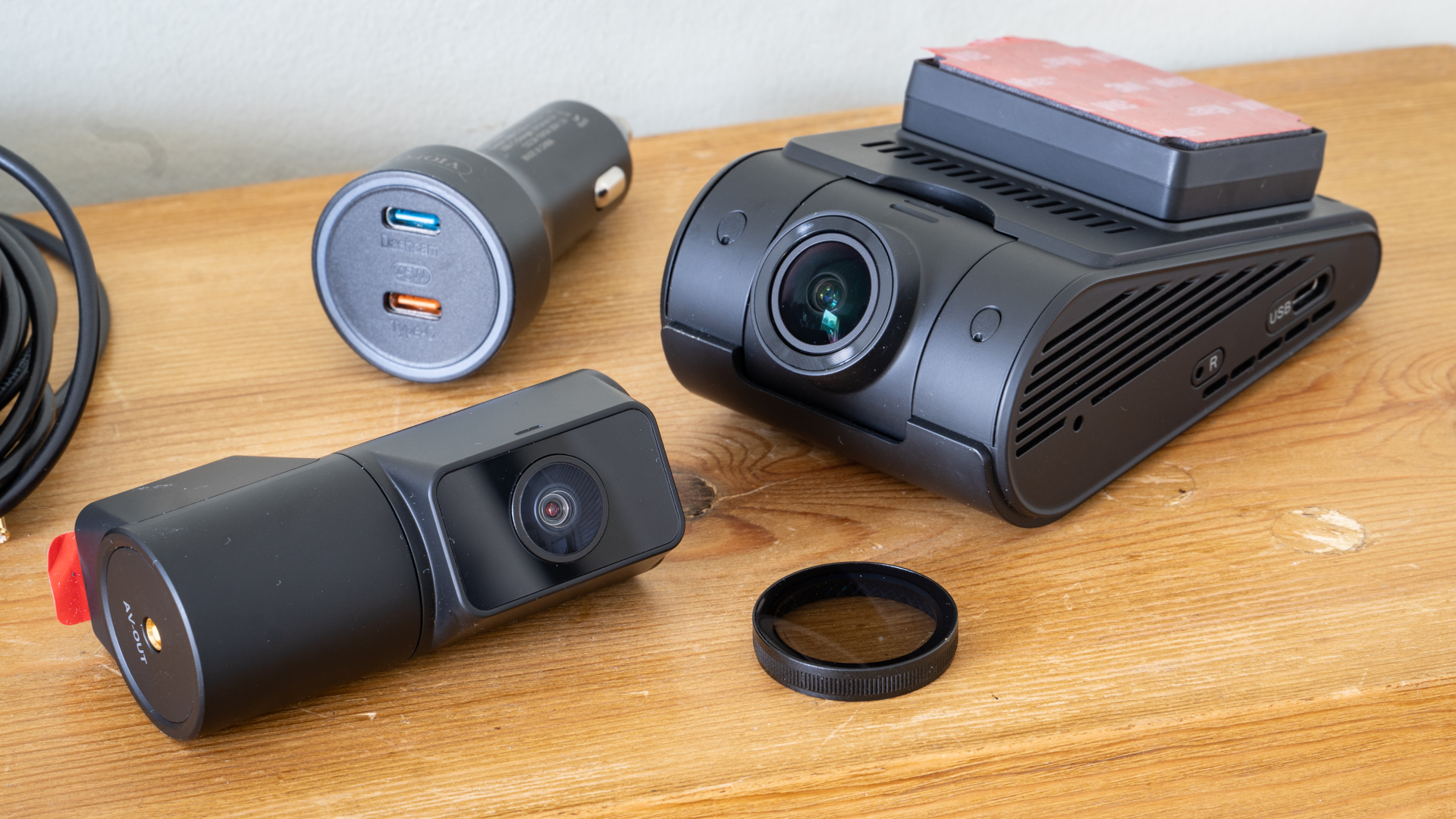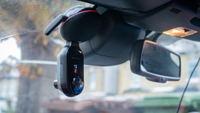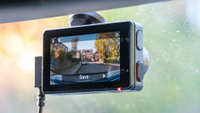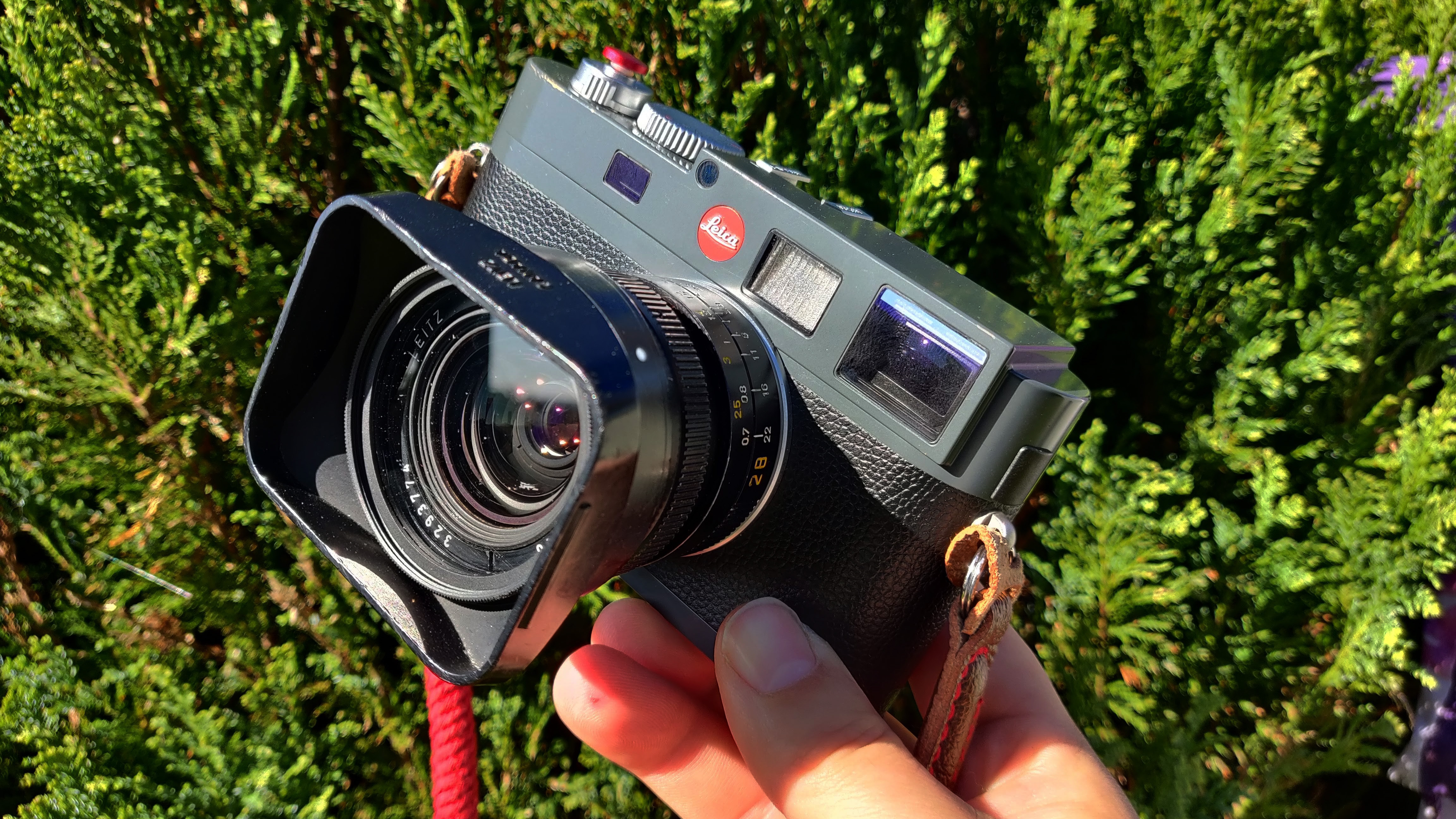Digital Camera World Verdict
The Viofo A329 is a dash cam every bit as good as its specification sheet (and price) suggests. It records detailed 4K video at a smooth 60 frames per second, while also including a polarizing lens filter and 2K rear camera. There’s also Wi-Fi 6 for speedy video transfers, and even the option for recording directly to an external solid-state drive. The A329 is a top-notch two-channel dash cam.
Pros
- +
Premium build quality
- +
High resolution front and rear
- +
Polarizing filter included
Cons
- -
Quite bulky
- -
Screen can be a distraction
- -
Expensive
Why you can trust Digital Camera World
Viofo has a new flagship dash cam, and it’s called the A329. This system sits just above the A229 Pro and is aimed at drivers who want the best video quality possible from their dash cam. The main unit shoots 4K video at 60 frames per second – which on paper at least is seriously impressive – and since this is a 2CH kit, there’s a rear camera too, in this instance recording at 2K.
Viofo uses Sony’s Starvis 2 imaging sensor for the A329, which has already proven itself in the much cheaper Viofo VS1 Mini and promises to deliver excellent low-light performance here too.
Other features of the A329 include a 2.4-inch display, Wifi 6 for faster video transfers – a 60-second 4K recording can be sent to your smartphone in under 10 seconds, Viofo says – and even the option to connect external SSD storage. Since 4K video takes up a lot of space, this gives the option of giving the dash cam up to 4TB (4,000 GB) of storage, far exceeding its microSD card limit of 512GB.
This all adds up to promise an excellent dash cam, but with a retail price of $469.99 / £399.95 you’ll have to pay for the privilege. Is the Viofo A329 the best compact dash cam for you? Read on to find out.

Viofo A329: Specifications
Resolution | 3840 x 2160p (front) / 2560 x 1440p (rear) |
Frame rate | 60 fps (front) / 30 fps (rear) |
Field of view | 140 degrees, front and rear |
HDR
| Yes, front and rear |
Wifi | Yes, 2.4 GHz & 5 GHz |
GPS | Yes |
Display | Yes, 2.4in |
Battery | No |
Parking mode | Yes, with buffering. Hardwiring required |
Viofo A329: Price
The Viofo A329 2CH is priced at $469.99 in the US and £399.95 in the UK, although at the time of writing a Viofo sale has reduced the latter by £40. Regardless, this is one of the more expensive dash cams around even though it’s a two-channel system.
It’s more expensive than the Garmin X310 (although that doesn’t include a rear-facing camera), the Nextbase 622GW, and is broadly on par with the all-singing, all-dancing Nextbase iQ. It is more than three times the price of Viofo’s smallest dash cam, the excellent VS1 Mini.
Viofo A329: Design & Handling
Right away, the A329 feels like a premium product. From the USB-C connectivity to the soft-touch plastic finish of the cameras themselves, and how Viofo includes an optional polarizing lens filter in the box, the A329 quickly sets off on a bid to defend its price tag.
The main unit is fairly chunky, measuring approximately 10 x 4 x 6 cm, but that’s understandable given the specification of the tech inside, that it houses a 2.4-inch display. There’s a USB-C port for connecting to the included power cable and 12-volt adapter, which itself has a second SUB-C socket for powering other devices, like your smartphone. There’s also a slot for your own microSD card (one is not included in the box), a micro HDMI port for video output, and a proprietary port for connecting the rear camera.
Speaking of which, the rear camera has the same soft-touch finish but lacks a polarizing filter. Viofo sells one separately though, called the CPL-500 Rear Filter Lens, priced at $15.99. The cylindrical rear camera rotates through 360 degrees, giving it an unlimited amount of vertica; adjustment once stuck to your rear windshield.
The front camera slots onto a sturdy plastic mounting plate, which then sticks to your front windshield with an adhesive pad.
My overall impression of the hardware is how, while sporting a more functional look than an aesthetically-pleasing one, the A329 feels well made and built to last.

Viofo A329: Performance
All you really need to know is, the A329’s performance lives up to its spec sheet. Footage from both cameras looks excellent, and the extra frame rate of the front-facer (60 fps) helps bring smoothness to every recording. This also helps maintain sharpness and clarity when pausing footage, such as when checking important details like road signs, turn signals and vehicle licence plates.
Footage from the front camera is a touch bright by default. But, while this tends to blow out the exposure of the sky, it helps to boost detail in less well-lit areas at street level, so it’s a net positive despite not being particularly cinematic.
The rear camera records 2K video at 30 frames per second. It would have been nice to see it equal the front’s 4K at 60 fps, but two channels of 4K video would eat up storage space even more quickly than the A329 already does.
Speaking of storage, each one-minute recording takes up around 500 MB of space, with about 340 MB of that being from the front-facing 4K camera. It won’t take long to fill up smaller microSD cards, so I can see why Viofo has created the option of attaching an external SSD (solid-state drive) for extra storage. That said, unless you are a professional driver who is more likely to need to keep recordings of every journey, a 64GB memory card should suffice. Especially since, like all other dash cams, the A329 locks footage captured just before and after a collision (and when you press the manual record button). You’d have to encounter a great many collisions, or other such incidents, before the card became full.
Resolution can be lowered in a bid to reduce video file size, but that somewhat defeats the point of buying this camera. More useful are options in the free Viofo app for increasing or reducing the exposure of each camera, enabling or disabling HDR, GPS and voice control, and adjusting the sensitivity of the impact sensor.
It’s handy to have easy access to such a broad range of settings. But, as is often the case with Viofo dash cams, the default setting is often perfectly fine. This sidesteps the app entirely and means you can simply mount the two cameras of the A329, plug it in, and start driving. As ever, I like how Viofo doesn’t ask buyers to share their email address and create a user account. Just connect your phone to the dash cam’s Wifi network, and the app will work right away.

Low-light performance is very good, thanks to the use of Sony’s Starvis 2 imaging sensors. As we also found in Viofo’s budget VS1 dash cam, night time recordings from the A329 don’t suffer from as much grainy noise as other dash cams. Detail is good, although it can still be tricky to read vehicle licence plates, especially when they are illuminated by our car’s own headlights. This is common among practically all dash cams.
The rear camera also performed well at night, but reminded us that you need to keep your windshields clean for best results. Since I mounted the rear camera to the perspex wind deflector of my Mazda MX-5 (Miata in the US), it records from about a foot ahead of the actual rear screen, so if that screen has any dirt on it, the camera has a hard time seeing out clearly to the road behind. That’s just how dash cams work in convertible cars, and isn’t a specific failing of the Viofo itself.

Viofo A329: Verdict
The Viofo A329 is a feature-packed dash cam that puts excellent video quality first. The 4K footage from its front-facing cameras is excellent, and smooth too, thanks to the 60 fps frame rate. This is joined by a similarly impressive 2K rear camera; both feature HDR and Sony Starvis 2 imagining sensors, which produce great low-light footage.
It’s a fairly bulky system, but the hardware feels well made and of high quality, thanks to Viofo’s use of soft-touch plastic, while the detachable polarizing lens filter is a nice no-cost addition. The system is easy to install and use, and I like how video can be transferred either via speedy WiFi6, or directly with a USB-C cable. For those who need masses of storage space, you can even attach an external SSD and record directly to that.
Overall, this is a high-quality dash cam system that delivers on its lofty promises. It isn’t cheap, but still feels like good value when compared to some other 4K, two-channel systems. All that’s missing is an interior camera, but I’d argue those are only really necessary for taxi and ride-share drivers. For everyone else, it’s hard to go wrong with this dash cam.
Features | From a high front and rear resolution with HDR, to high-speed Wifi, GPS, Starvis 2 sensors and support for SSD storage, this dash cam has it all. Aside from cellular connectivity – admittedly a niche feature – the A329 offers just about everything you could ever need from a dash cam. | ★★★★★ |
Design | The A329 goes some way to justify its high price with a high-quality construction and a premium, soft-touch finish. It isn’t the smallest dash cam around, but it’ll still look neat in most vehicles and its size is understandable given the display and processing power required for constant 4K front / 2K rear recording. | ★★★★★ |
Performance | This dash cam produces excellent footage from both its 4K front and 2K rear cameras. This is aided by a high, 60 fps frame rate for the front-facer, plus support for HDR and the option to adjust parameters like exposure value. Night time recordings are particularly good, thanks to how the Sony Starvis 2 imaging sensors (used by both cameras in this kit) produce excellent low-light footage with little of the usual grainy noise found in footage by lesser dash cams. | ★★★★★ |
Value | The Viofo A329 is certainly an expensive dash cam system, but no more so than rival flagships from brands like Garmin, Nextbase and Thinkware. In fact, when you factor in the included rear camera, Viofo has managed to undercut 4K alternatives like the Thinkware U3000 and Nextbase iQ. | ★★★★☆ |
✅ Buy it if…
- You want the very best: As the price and spec sheet suggest, this is a top-end dash cam that produces superb video. Not cheap, but if you want the best recordings this is a dash cam to consider.
- You prefer your dash cams with screens: The 2.4-inch screen is handy for checking the angle of the cameras and adjusting settings, but it makes the A329 a chunkier dash cam than most.
- You value simplicity: Despite the high-end specifications, this is a remarkably simple dash cam to use. You don’t have to create an account or download the app, if you don’t want to.
❌ Don’t buy it if…
- You need a compact dash cam: The display and high-end spec make this a fairly large dash cam. So, while it should fit behind the central mirror of most vehicles, it takes up a little more space than many others.
- You need an interior camera too: This a two-channel system, meaning it records to the front and rear, but lacks an internal view. Taxi drivers wanting a dash cam with a cabin-facing camera should look elsewhere.
- You’re on a budget: Clearly, this isn’t a dash cam for shoppers on a tight budget. If that’s you, we recommend looking at the Viofo VS1 or Nextbase Piqo instead.
Alternatives
Nextbase iQ
Another all-singing, all-dancing dash cam, the iQ also packs 4K video but adds an interior camera and the option for 4G connectivity, turning it into a remote surveillance camera when your car is parked.
Garmin X310
Garmin’s latest flagship dash cam records in 4K resolution and comes with an integrated polarizing lens. More compact than the Viofo, it also has voice control and collision warnings.
Alistair has been a journalist since 2011 and used to be Deputy Technology Editor at IBTimes in London. His specialist tech subjects include smart home gadgets, phones, wearables, tablets and dashcams. He is the host of The AutoChat Podcast.
You must confirm your public display name before commenting
Please logout and then login again, you will then be prompted to enter your display name.





